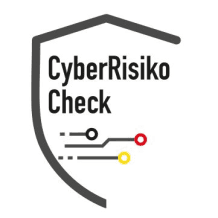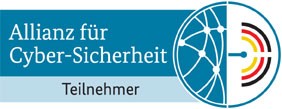Secure Cloud Architecture – A Comprehensive Guide
Secure Cloud Architecture refers to the strategic approach to designing, implementing, and managing cloud infrastructures that are designed to meet the highest security standards. This guide provides an in-depth insight into the principles of secure cloud architecture, highlighting challenges and opportunities, and delivering practical strategies and best practices to adequately protect cloud environments. In this context, questions such as "What is Secure Cloud Architecture?", "Why is a secure cloud infrastructure necessary?", "How can companies secure their cloud services?", and "What technologies support a secure cloud solution?" are answered in detail.
Fundamentals and Definitions
As the transition from traditional IT infrastructures to cloud-based environments occurs, the need for specific security measures for the virtual world increases. Secure Cloud Architecture combines proven IT security approaches, such as access control, encryption, network segmentation, and continuous monitoring, with methods specifically tailored to the dynamics and scalability of cloud services. A secure cloud architecture is therefore more than just implementing firewalls or encryption protocols – it encompasses a holistic security concept that considers all relevant aspects from planning to execution.
W-Questions as a Guide
What is Secure Cloud Architecture? Secure Cloud Architecture describes the entirety of security measures and processes that are implemented in cloud environments to process data in an integrity- and confidentiality-compliant manner. This includes security policies, technical measures, as well as organizational processes that enable the prevention of cyberattacks, data loss, or unauthorized access.
Why does Secure Cloud Architecture play a central role? In times of increasing cyber threats and stricter legal requirements, such as the GDPR, the protection of data and systems becomes increasingly important. Companies that utilize cloud services face the challenge of protecting their sensitive data both in transmission and in storage. A robust cloud security architecture not only ensures protection against external attacks but also against internal security risks such as abuse of permissions or human error.
How can a Secure Cloud Architecture be implemented? Implementation begins with a detailed risk assessment and evaluation of the existing IT infrastructure. Based on this, security concepts are developed that consider both physical and virtual components. Typical measures include the use of Identity and Access Management (IAM) systems, encryption technologies, Intrusion Detection/Prevention Systems (IDS/IPS), and continuous monitoring and auditing systems.
Where are the greatest challenges? A critical point is the complexity of cloud environments and the dynamic nature of the services offered, which often overwhelm traditional security mechanisms. Additionally, it must be ensured that all parties involved – from internal IT departments to third-party providers to end users – adhere to the security policies. This requires regular training, updates, and strict compliance measures.
What technologies support a Secure Cloud Architecture? Innovative technologies such as artificial intelligence (AI) and machine learning (ML) are increasingly being used to identify unusual activities. Automated security processes and DevSecOps approaches integrate security into the entire development process, allowing vulnerabilities to be detected and addressed early.
Challenges and Approaches to Solutions
With the ongoing digitalization and increased use of cloud services, the attack surfaces for potential cyber threats are also growing. Companies today face a variety of risks, including DDoS attacks, data leaks, and unauthorized access. The challenge lies in finding a balance between flexibility, performance, and security. A well-thought-out Secure Cloud Architecture incorporates mechanisms for continuous monitoring, rapid incident response plans, and regular audits to close security gaps promptly.
3.1 Dynamic Security Models
A key feature of modern cloud security architectures is their ability to adapt to changing threat landscapes. Dynamic security models allow security policies to be updated in real time. This often happens through automated systems that detect potential anomalies and immediately initiate countermeasures. For example, the use of ML algorithms can detect an unusually high number of accesses to sensitive data and block them immediately.
3.2 Integration of Security Solutions
The seamless integration of various security solutions is another crucial aspect. Cloud environments often utilize heterogeneous systems and applications that require different security solutions. By using interfaces and standardized protocols, these security solutions can be effectively linked. This ensures consistent protection, even as data moves back and forth between multiple platforms and services.
3.3 Compliance and Legal Requirements
An often underestimated aspect is compliance with legal requirements and compliance obligations. Depending on the industry and geographical location, companies are subject to specific regulations concerning the handling of sensitive data. Secure Cloud Architecture therefore also includes measures to ensure compliance with standards such as ISO 27001, SOC 2, and the GDPR. Regular audits and certifications are essential to meet legal requirements and build trust with customers and partners.
Best Practices for a Secure Cloud Infrastructure
To create a robust cloud security architecture, companies should consider the following best practices:
4.1 Basic Security Measures:
- Implementation of zero-trust architectures, where no user or device is automatically trusted.
- Use of multi-factor authentication (MFA) for all critical accesses.
- Regular updates and patch management of operating systems and applications.
4.2 Data Encryption:
- Encryption of data both at rest and during transmission.
- Use of modern encryption standards to withstand future threats.
4.3 Monitoring and Logging:
- Introduction of centralized monitoring systems that capture all activities in the cloud.
- Use of Security Information and Event Management (SIEM) systems to identify and analyze suspicious activities promptly.
4.4 Training and Awareness Programs:
- Regular training for employees to raise security awareness.
- Establishment of clear policies and processes that can be implemented immediately in case of emergencies.
Implementation and Continuous Improvement
An effective Secure Cloud Architecture requires a continuous improvement process. This means that security measures must be regularly reviewed, updated, and audited. The processes should be designed to be flexible to respond to new threats. These include:
Regular penetration tests and security reviews that show whether the implemented measures withstand current threats.
Deployment of incident response teams that can act quickly in case of emergencies and minimize damage.
Integration of feedback loops to learn from past incidents and optimize future security concepts.
Economic and Strategic Advantages
Companies that invest in a secure cloud architecture benefit not only from increased protection against cyberattacks but also from economic advantages. A robust security infrastructure can significantly reduce the risk of costly security incidents. It also enhances trust among customers, partners, and investors, as the security of sensitive data is the highest priority.
6.1 Cost Reduction through Prevention
Investing in preventive security measures can save costs in the long run, as it avoids realized risks and potential data losses. Additionally, the effort in a crisis, such as the failure of IT systems or fixing security gaps, can be significantly reduced.
6.2 Competitive Advantages
Especially in industries where data protection and data security are central success factors, a secure cloud architecture provides a clear competitive advantage. Customers prefer companies that reliably protect their data and transparently communicate how they address security risks.
Case Studies and Application Examples
Numerous companies have already taken the step toward a secure cloud infrastructure and benefit from its various advantages. One example is a multinational company
Secure Cloud Architecture in Germany: Current Developments
The importance of secure cloud architecture in Germany is continuously growing. According to recent studies by the Federal Office for Information Security (BSI), German companies are increasingly affected by cyber threats. The Bitkom Association reports that 84% of German companies have been victims of cyberattacks in the past two years.
Particularly in the area of secure cloud architecture, the following trends can be observed:
Increasing investments in preventive security measures
Increased awareness of holistic security concepts
Integration of secure cloud architecture into existing compliance frameworks
EU Compliance and Secure Cloud Architecture
With the introduction of the NIS2 Directive and stricter GDPR requirements, German companies must adjust their security strategies. Secure Cloud Architecture plays a central role in meeting regulatory requirements.
Important compliance aspects:
Documentation of security measures
Regular review and updating
Proof of effectiveness to regulatory authorities
Practical Implementation in Corporate Daily Life
The integration of secure cloud architecture into corporate daily life requires a structured approach. Experience shows that companies benefit from a gradual implementation that considers both technical and organizational aspects.
Think of secure cloud architecture as an insurance policy for your company: The better prepared you are, the lower the risk of damage from security incidents.
Further Security Measures
For a comprehensive security strategy, you should combine secure cloud architecture with other security measures:
Vulnerability Management - Systematic vulnerability management
Penetration Testing - Comprehensive security testing
Security Hardening - Employee awareness
Incident Response Plan - Preparation for security incidents
Conclusion and Next Steps
Secure Cloud Architecture is an essential building block of modern cybersecurity. Investing in professional secure cloud architecture measures pays off in the long term through increased security and compliance conformity.
Want to optimize your security strategy? Our experts are happy to advise you on the implementation of secure cloud architecture and other security measures. Contact us for a non-binding initial consultation.
🔒 Act now: Have our experts assess your current security situation
📞 Request a consultation: Arrange a free initial consultation on secure cloud architecture
📋 Compliance Check: Review your current compliance situation
📌 Related Topics: Cybersecurity, IT Security, Compliance Management, Risk Assessment




